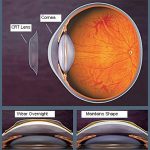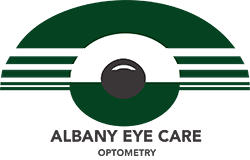Corneal Reshaping Therapy (CRT)
Frequently Asked Questions
 Q: What is Corneal Reshaping Therapy (CRT)
Q: What is Corneal Reshaping Therapy (CRT)
A: The CRT System uses specially designed contact lenses to gently and gradually reshape the front surface of the eye (the cornea) to eliminate or reduce nearsightedness (myopia) and/or astigmatism. The contact lenses need to be worn daily, usually at night while sleeping (like a retainer). They are then removed upon waking in the morning to provide clear vision without using glasses or contact lenses. The contact lenses are comfortable and easy to care for.
Q: I’ve never heard of CRT. Is it new?
A: Not really. Attempts to re-shape the cornea have been tried since the very first contact lens fit. Initially, the process would take years to complete and results were often poor. With today’s diagnostic technology, and newer contact lens materials, CRT is now a viable alternative for correcting myopia and small amounts of astigmatism.
Q: How long do CRT lenses last?
A: Usually the lifespan of a CRT lens is about one (1) year. While the lenses are a hard contact lens and are very durable, the contact lens parameters typically need to be adjusted yearly in order to maintain the optimal treatment. For this reason, yearly comprehensive eye exams along with a specialty contact lens fittings are needed yearly once the program is started.
Q: Do all eye doctors fit these type of lenses?
A: No, CRT is not effective or intended for every patient and the treatment needs to be performed in a very exact and meticulous method. The doctors at Albany Eye Care have been certified to fit this type of specialty contact lens. This is important as each patient is custom fit for a lens specific to his/her individual needs. Albany Eye Care has the necessary diagnostic equipment and contact lenses to perform CRT fittings. In addition, Dr. Tolman himself, wore these lenses through part of his collegiate career.
Q: When it comes to my eyes, is CRT safe?
A: CRT is safe and we utilize FDA approved designs and materials. It is safe for children and adults and can be an excellent alternative for those wishing to forgo spectacles or traditional soft contact lenses. However, like any contact lens wearer, potentially sight-threatening infections are possible. This possibility is minimized if the contact lenses are worn and cared for properly.
Q: Where can I find more information?
If you’re interested in learning more about the CRT System or want to find out if you could be a candidate for CRT, CONTACT OUR OFFICE today for an appointment!
